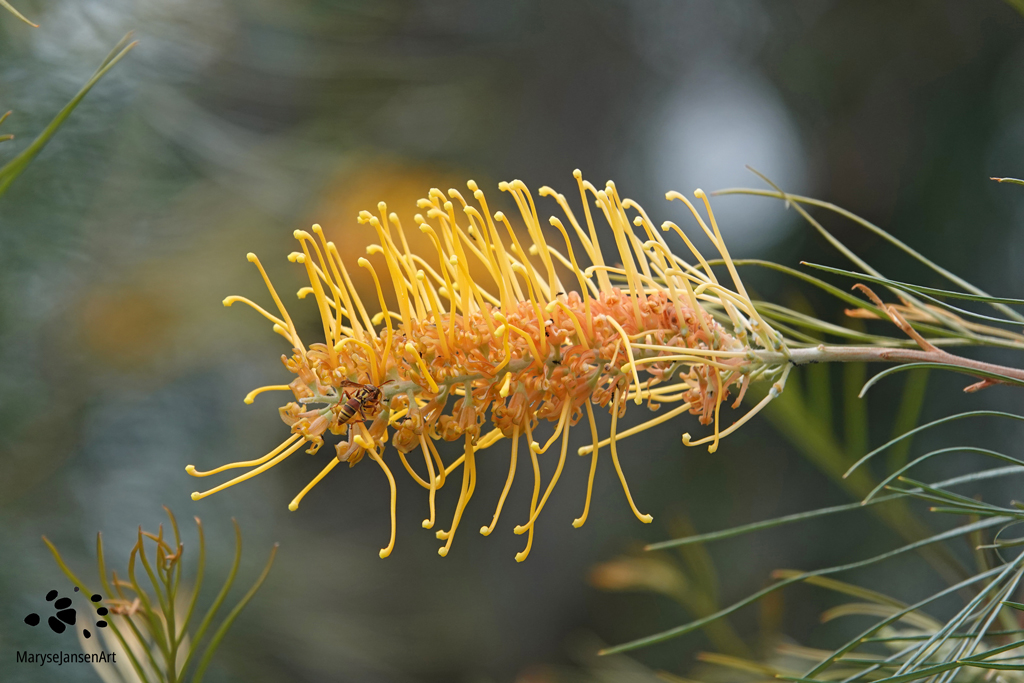Flower Photography with marysejansenart
Hardy beauties decorate bush, park and garden
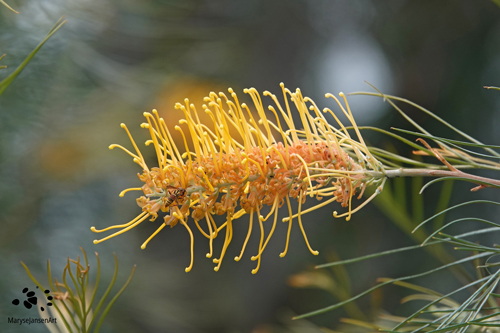
Table of Contents
A Colourful Display
As we are coming into spring, I daily enjoy a colourful display of Grevillea flowers! It is incredible how many varieties there are in colour, shape and size of these plants in the Proteaceae family. Grevilleas are native to Australia and generally take the form of a shrub, but there are also species that grow into full trees and others that behave more like a ground cover. While I do come across them in the bush, they are also incredibly popular in gardens and parklands, which is why I can enjoy them on a daily basis.
I’m admiring one of my favourites, a deep orange-yellow one. You can see it in the featured image. I notice an insect on it. It is a paper wasp. These are very interesting creatures, that build their nests from a paper-like substance that they create by chewing on vegetation. I have some footage of the paper wasps in an earlier episode of my ‘Come for a walk in the Australian Bush’- series. You can check it out here.
Inflorescence
The flower itself is very interesting. It is not actually one single flower, but a cluster of lots of little flowers! Each little tendril that you see on the flower represents a single flower, called a floret! Together, they form a cluster of flowers called an inflorescence.
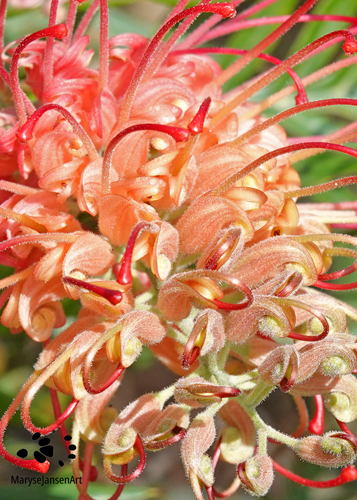
The Grevillea is a simple inflorescence: where normally the stem of a flower holds one single flower, in the Grevillea the stem holds lots of little floral stems, which is why the florets look like little tendrils. There is also such a thing as compound inflorescences, where each single flower is replaced by another inflorescence. Many examples of this can be found in the Myrtaceae family, which includes Eucalyptus.
Grevillea flowers have three main shapes
There are over 350 species of Grevillea. And on top of that, there are more than a 1000 cultivars! It is definitely beyond my scope to be able to identify all the individual species, so I just settle to enjoy and share the beauty of them as a group. They are all evergreen and have long, narrow leaves that may be needle-like or more fern-like. A lot of species bloom over a long period of the year.
The flowers come in three main shapes. The deep orange-yellow flower cluster has a shape that looks like a brush. Two other types can be distinguished: the spider- and the toothbrush-shaped flowers. Check out the images below to see what they look like.
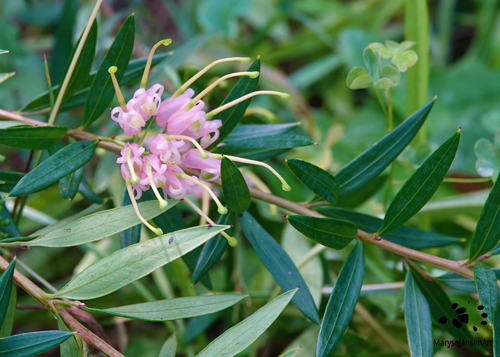
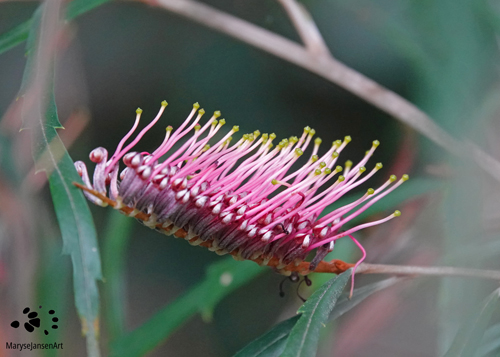
Grevilleas are well loved by birds, insects and Aboriginal people for the nectar
Grevilleas grow in a great variety of habitats, as long as the soil is well-drained, not saline and not at high altitude. They are very hardy plants, and once established will thrive in most conditions. They do love the sun, so even though they tolerate a shady spot, they will grow best in a sunny place.
The flowers are very popular amongst birds and insects. Especially honeyeaters frequently visit the flowers for their nectar and pollen. It is also definitely one of the favourite food sources for the colourful Rainbow Lorikeet! It makes a splendid combination for a photo. Especially when the bird visits one of those deep yellow flowers, which complements the colours of the bird in a stunning way.
During my walk today, I spot a Rainbow Lorikeet on a pale yellow Grevillea, which is also very pleasing to the eye. You can see it for yourself as you watch the video below, the latest episode of ‘Come for a walk in the Australian Bush’. A number of Grevilleas feature here as they liven up the parklands along the banks of a creek.
The plant also has a use as bush tucker. Aboriginal people like to consume the sweet nectar of the Grevillea flowers. They might suck it straight out of the flower, shake it into their hand first, or soak the flower in water to create a sweet drink. I have to add a warning not to try this yourself because a lot of common cultivars carry the toxin cyanide in their flowers.
It is not a surprise that these hardy beauties, that attract beautiful birds, bees and butterflies, are so commonly chosen to decorate our parks and backyards! Which one is your favourite colour or shape? Do you have one in your yard? I’d love to hear about it in the comments!

If you are interested in purchasing the featured image ‘Grevillea Flower with Paper Wasp’ or would like to see what it looks like on the various products, please head to my shop. Check out the other images and more in my Flowers Gallery.

